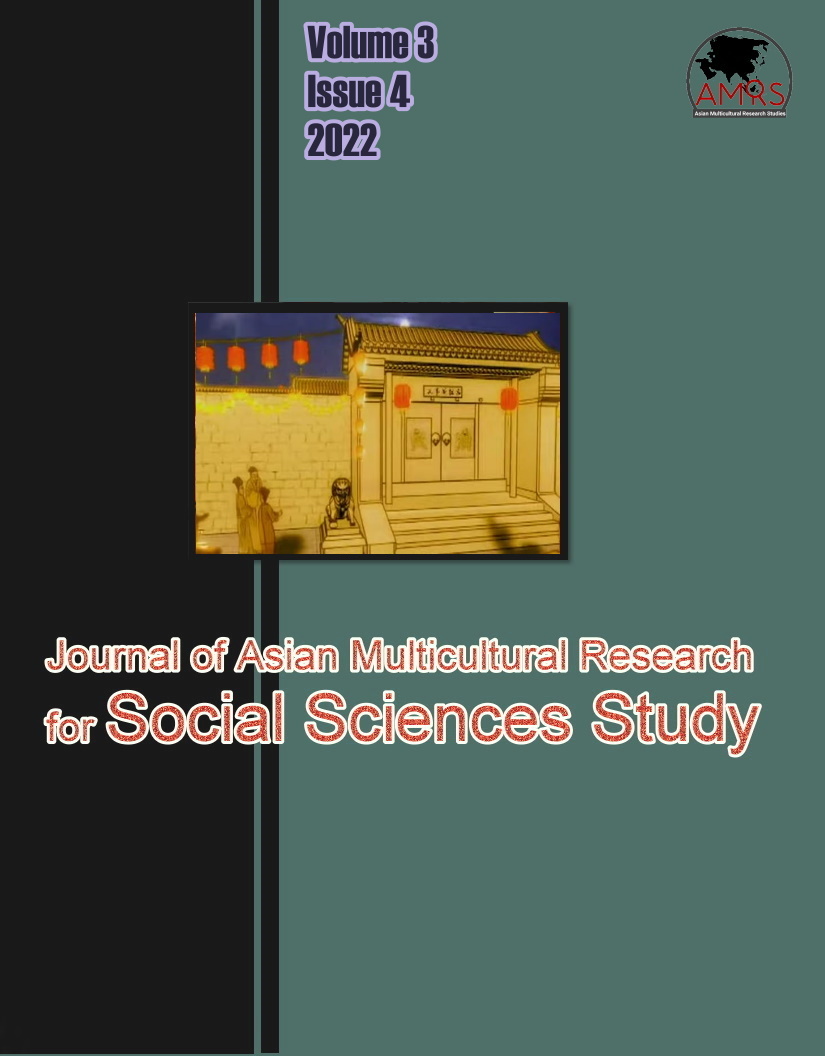The Role of Language in Cross Cultural Bonds
DOI:
https://doi.org/10.47616/jamrsss.v3i4.321Keywords:
Language, Cross-Cultural Bonds, Society, Social Change, CommunitiesAbstract
The goal is to look at how language helps people from different cultures get along. Language is an important part of how people interact with each other because it is the most basic way to share ideas and information. Language is a reflection of culture, so when people from more than one culture live together, how they use language is more important and complicated. The is also going to be one of the goals that is reviewed How the use of different languages creates barriers in cross-cultural communities and how these barriers affect the bonds that are made in cross-cultural communities. In the field of development, the question of what role language plays in communities with many different cultures is becoming more and more important. The world-wide study of both literature and social studies. As Cross-cultural communication brings together the seemingly unrelated fields of cultural anthropology and communication. Its goal is to bridge the gap between these two fields. Cross-cultural communication is based on being able to understand the different ways that people from different cultures interact with each other. In addition, it is supposed to come up with some recommendations that can help people from different cultures communicate better with each other. As a society's cultural practices and linguistic patterns shape the way people think, act, and communicate with the outside world, they also shape the way people think, act, and communicate with each other.Downloads
References
Bhabha, H. K. (2012). The location of culture. routledge.
Cervera Salinas, V. (2011). La poesía viaja a América: la Alocución lírica de Andrés Bello. Philologia Hispalensis, 2011, 25: 65-76.
Edwards, R. (1998). A critical examination of the use of interpreters in the qualitative research process. Journal of ethnic and migration studies, 24(1), 197-208.
Fuller, J. H. S., & Toon, P. D. (1988). Medical practice in a multicultural society. Heinemann Professional.
Guvercin, H. (2015). Mother tongue: The language of heart and mind.
Hammer, M. R., & Bennett, M. J. (2009). The intercultural development inventory. Contemporary leadership and intercultural competence, 16, 203-218.
Hanks, W. F. (2010). Converting words: Maya in the age of the cross (Vol. 6). Univ of California Press.
Hopkins, E. (1987). British Asians-health in the community. Wiley.
Keysar, B., Hayakawa, S. L., & An, S. G. (2012). The foreign-language effect: Thinking in a foreign tongue reduces decision biases. Psychological science, 23(6), 661-668.
Kramsch, C. (2014). Language and culture. AILA review, 27(1), 30-55.
Kramsch, C., & Steffensen, S. V. (2008). Ecological perspectives on second language acquisition and socialization. Encyclopedia of language and education, 8, 17-28.
Mill, J. E., & Ogilvie, L. D. (2003). Establishing methodological rigour in international qualitative nursing research: a case study from Ghana. Journal of Advanced Nursing, 41(1), 80-87.
Oakes, L. (2001). Language and national identity. Comparing France and Sweden.
Porter, S. E. (1996, February). Problems in the language of the Bible: Misunderstandings that continue to plague biblical interpretation. In The Nature of Religious Language: A Colloquium/[ed. SE Porter]. Sheffield: Sheffield Academic Press Ltd (pp. 20-46).
Salmoni, B. A., & Holmes-Eber, P. (2008). Operational culture for the warfighter: Principles and applications. Marine Corps..
Simon, S. (2003). Gender in translation. Routledge.
Squires, A. (2009). Methodological challenges in cross-language qualitative research: A research review. International journal of nursing studies, 46(2), 277-287..
Thomson, A., Rogers, A., Honey, S., & King, L. (1999). If the interpreter doesn’t come there is no communication: A study of bilingual support services in the north west of England. Manchester: School of Nursing, Midwifery and Health Visiting, University of Manchester.
Training, U. A., & Center, D. C. C. (2007). Culture Education and Training Strategy for the US Army. Fort Huachuca, AZ: US Army Intelligence Center..
Ward, M. J., & Ward, C. J. (2003). Promoting cross-cultural competence in preservice teachers through second language use. Education, 123(3).
Wierzbicka, A. (2004). The English expressions good boy and good girl and cultural models of child rearing. Culture & Psychology, 10(3), 251-278.
Zlomislić, J., Gverijeri, L. R., & Bugarić, E. (2016). The significance of intercultural competence in cross-cultural communication. Ekonomski vjesnik/Econviews-Review of Contemporary Business, Entrepreneurship and Economic Issues, 29(2), 433-451.
Downloads
Published
How to Cite
Issue
Section
License
Copyright (c) 2022 Journal of Asian Multicultural Research for Social Sciences Study

This work is licensed under a Creative Commons Attribution-ShareAlike 4.0 International License.































